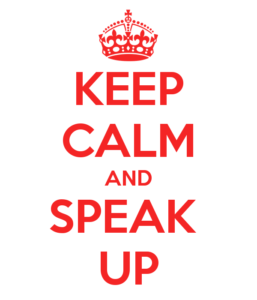 Mission-based agencies – nonprofits, non-governmental organizations, charities, government offices, schools, etc. – are often thought of as being in the business of doing good rather than the business of making money. We like to believe, therefore, that such programs are naturally, inherently good, righteous, even superior. We like to believe that, at such programs, everyone – employees, consultants, volunteers and program participants – is on the same page when it comes to honest practices and integrity.
Mission-based agencies – nonprofits, non-governmental organizations, charities, government offices, schools, etc. – are often thought of as being in the business of doing good rather than the business of making money. We like to believe, therefore, that such programs are naturally, inherently good, righteous, even superior. We like to believe that, at such programs, everyone – employees, consultants, volunteers and program participants – is on the same page when it comes to honest practices and integrity.
However, the reality is that such agencies are run by humans, and humans suffer lapses in ethics, common sense and judgment. Humans are fallible and, therefore, mission-based organizations are fallible.
I don’t know of many nonprofits or government programs that make ethics a written, central priority to their operational strategy. According to the Ethics and Compliance Initiative, research shows that such a practice can reduce misconduct “by as much as 66 percent in organizations with effective programs,” as noted in this article “Before the Whistle Blows: Creating a Speak-up Culture at Work,” from August 2016 in Workforce magazine. Yes, the author is talking about for-profit businesses, but I can’t imagine anything in this article isn’t also applicable, and essential, to the mission-based world.
The subtitle of the article is “Creating an environment in which employees feel empowered to speak up when they suspect wrongdoing starts at the top.” I would love to go to an entire workshop on this subject, and see such workshops offered at any and all conferences for managers of volunteers and conferences regarding any kind of nonprofit management.
From the article:
Creating a “speak-up” culture puts a premium on ethical decision-making across the board with responsibility shared by all. But setting the tone and promoting that culture rests squarely on the shoulders of organizational leaders. Their endorsement and modeling create an atmosphere of openness and trust that reassures employees who are understandably anxious about coming forward, whether out of fear of being let go or fear of being ostracized. Leaders who take employee concerns seriously and follow through send a strong message about integrity.
That should be a wake-up call to all senior staff at mission-based organizations. How many of you have communicated your views to your staff regarding ethical behavior?
The heart of how to create such a speak-up culture is this, at least IMO:
Make sure that managers and supervisors receive thorough training in how to respond to and guide employees who come forward. These sessions may also expand to include full team training with hypothetical scenarios or case studies. Simultaneously, the organization ensures that the ethics and compliance policy is clear on how violations are identified and acted upon. Employees must know what constitutes misconduct within the organization and at what point it should be reported. From there, employees need to know the methods available for speaking up. A high quality ethics program will have multiple methods for reporting concerns.
The profound failures at Penn State to address reports of suspicions of crimes against children and to warn people if their safety might be threatened, all regarding former assistant football coach Jerry Sandusky, convicted of child molestation while working at Penn State, should give every organization pause. There was no “speak up” culture at Penn State, and not just within the athletic program. I remain flabbergasted as I read about the case – and I read extensively about it – that people did not report what they saw, or if they did report, those who received the information did not act appropriately about it. And I wish I could say it was the exception, but I quiz organizations about their reporting procedures regarding suspected misconduct and, more often than not, find they do not have such. Many will say, in their defense of not having any procedure, “Well, we haven’t had any problems!” And I say, “So far.”
Every organization is different in how it should set up methods for reporting suspicion of misconduct or unsafe conditions, for response to such and for follow-up. In addition to getting legal advice on how it should be done, creating procedures can be a terrific exercise for employees and volunteers – they will be buying in to it by designing it. But you have to create a trusting environment where participants feel comfortable asking questions and discussing sensitive topics, such as what they think they should do if they:
- hear a client telling a joke that is racist or sexist to a staff member
- have seen an employee, consultant, volunteer or client use an organization’s device and/or Internet access to visit pornography sites
- know a staff member is taking equipment home without permission
- learn that an adult volunteer frequently texting with an under-aged teen volunteer
- suspect an adult volunteer at your organization is dating a minor he or she met through your organization
How will you create that trusting environment? That’s the subject of another blog.
Also see:






